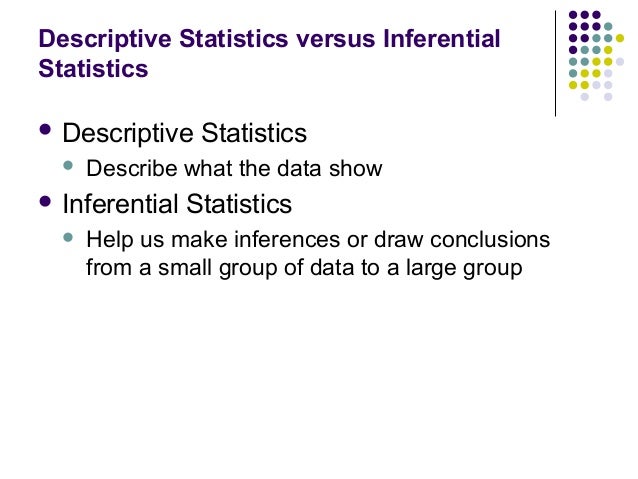
Descriptive Versus Inferential Statistics. Descriptive statistics are used to describe the general conditions and characteristics of the data while inferential statistics are used to draw conclusions for. Statistics as a field of study can be divided into two main branches descriptive and inferential statistics. Descriptive Statistics Both descriptive and inferential statistics help make sense out of row after row of data. They do not involve generalizing beyond the data at hand.

The term implies that information has to be inferred from the presented data. Inferential statistics allow you to test a hypothesis or assess whether your data is generalizable to the broader population. These observations had been described by the descriptive statistics. Descriptive statistics describes a situation while inferential statistics explains the likelihood of the occurrence of an event. Descriptive statistics are used to describe the general conditions and characteristics of the data while inferential statistics are used to draw conclusions for. Several descriptive statistics are often used at one time to give a full picture of the data.
Inferential statistics involves studying a sample of data.
Several descriptive statistics are often used at one time to give a full picture of the data. Several descriptive statistics are often used at one time to give a full picture of the data. These observations had been described by the descriptive statistics. Descriptive and Inferential Statistics When analysing data such as the marks achieved by 100 students for a piece of coursework it is possible to use both descriptive and inferential statistics in. Descriptive statistics is the statistical description of the data set. Inferential Statistics Although descriptive statistics is helpful in learning things such as the spread and center of the data nothing in descriptive statistics can be used to make any generalizations.